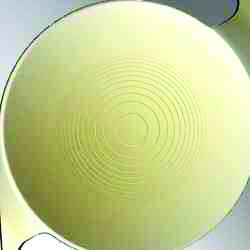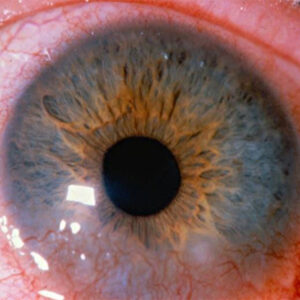Cornea
July 2021
by Liz Hillman
Editorial Co-Director
Masks use quickly became a mainstay during the COVID-19 pandemic. While in recent months, mask use has been relaxed somewhat as health guidelines are updated to reflect increased vaccination status and declining case numbers, there are still situations and circumstances where mask wear continues. These face coverings have been credited with playing a role in saving lives, but they have been associated with some unintended ocular consequences as well.
The CDC updated its mask guidelines in May 2021 for fully vaccinated individuals. According to the CDC, fully vaccinated people “can resume activities without wearing a mask or physically distancing, except where required by federal, state, local, tribal, or territorial laws, rules, and regulations, including local business and workplace guidance.”1 As of the time of publication, the CDC still recommends unvaccinated individuals “wear masks in public settings, at events and gatherings, and anywhere they will be around other people.”2

Majid Moshirfar, MD, and Rona Silkiss, MD, who both published papers observing ocular conditions associated with mask use, emphasized the importance of mask wearing.
Dr. Silkiss’ publication demonstrated an increased incidence of chalazion following widespread mask wear.3 The retrospective multicenter study evaluated EMR data from a San Francisco community and Los Angeles academic practice from June–August 2020 compared to the same months in 2016, 2017, 2018, and 2019. There was a statistically significant rise in chalazion incidence in 2020 when mask wearing was prevalent.
“It will be interesting to see if the rise in chalazion incidence declines as the incidence of COVID-19 declines and vaccinated individuals are able to curtail their mask wear,” Dr. Silkiss said.
Dr. Moshirfar coauthored a paper that described “a marked increase in dry eye symptoms among regular mask users at multiple local clinics.”4
Several other papers have been published in the literature discussing a connection between mask use and dry eye symptoms. A case report published online drew attention to the issue, calling upon ophthalmologists to “ensure patients are not put at risk of unintended ocular surface exposure leading to secondary infection by addressing inadequately fitted facemasks in the immediate post-operative period.”5 A self-reported survey of more than 3,600 individuals found 18.3% experienced mask-associated dry eye.6 This survey looked at whether glasses or contacts influenced mask-associated dry eye, among other factors; it did not find a significant impact on mask-associated dry eye based on refractive correction type.
Dr. Moshirfar said that when his team looked at a survey of patients, they noticed ocular irritation that seemed to be associated with mask use, mostly affecting a certain patient population, those who were elderly, recently had ocular surgery, who had preexisting dry eye, and/or who had lower lid problems.
“In certain groups of patients who are at high risk and who might have elevated levels of dryness, epitheliopathy, or already have bad lid excursion or exposure keratopathy, we need to be more aware that if the face mask is not placed properly, their breathing may direct convection of air through their face mask, affecting their tear film. … As a result, their tear film breaks up sooner and that can, over the course of a few hours, cause more problems,” Dr. Moshirfar said.
Dr. Moshirfar noted that many patients who were taping their masks to achieve a better seal to avoid fogging of their glasses actually showed increased dry eye symptoms. How the masks were taped in many cases, Dr. Moshirfar said, compromised lower lid movement, leading to more exposure of the eye over time.
Dr. Moshirfar said that ophthalmologists should be aware of the risk factors that could exacerbate problems from mask-associated dry eye and provide patients with tips to avoid this. He said to avoid masks that are too tight or worn too high because they could impact lower lid movement or push on orbital fat. If tape is used, a hypoallergenic paper tape should be applied on the upper portion of the mask and placed on the face in a way that doesn’t interfere with lid movement or apply pressure. He also advised increased use of artificial tears, closing one’s eyes for several minutes, and performing blinking exercises at intervals throughout the day.
Dr. Silkiss suggested wearing a mask with a built-in nose clip, washing or changing the mask daily, using a lid scrub, frequent hand washing, and use of artificial tears.
Dr. Moshirfar said that ophthalmologists should be on the lookout for patients who are at a higher risk for dry eye and exposure keratopathy with mask use and help them mitigate these factors with proper wear.
ARTICLE SIDEBAR
Tips to mitigate mask-associated dry eye
- Be aware of risk factors (elderly, recent ocular surgery, on drops with preservatives, existing dry eye, lid problems, etc.)
- Ensure proper fit and placement of masks.
- Use additional moisturizing artificial tears throughout the day.
- Take breaks to close eyes for several minutes at a time.
- Perform blinking exercises.
About the physicians
Majid Moshirfar, MD, FACS
Adjunct Professor of Ophthalmology
John A. Moran Eye Center
Department of Ophthalmology and Visual Sciences
University of Utah School of Medicine
Salt Lake City, Utah
Rona Silkiss, MD, FACS
Chief
Division of Ophthalmic Plastic, Reconstructive and Orbital Surgery
California Pacific Medical Center
San Francisco, California
References
- CDC. When You’ve Been Fully Vaccinated. www.cdc.gov/coronavirus/2019-ncov/vaccines/fully-vaccinated.html. Accessed May 27, 2021
- CDC. Your Guide to Masks. www.cdc.gov/coronavirus/2019-ncov/prevent-getting-sick/about-face-coverings.html. Accessed May 27, 2021
- Silkiss RZ, et al. Increased incidence of chalazion associated with face mask wear during the COVID-19 pandemic. Am J Ophthalmol Case Rep. 2021;22:101032.
- Moshirfar M, et al. Face mask-associated ocular irritation and dryness. Ophthalmol Ther. 2020;9:397–400.
- Chadwick O, Lockington D. Addressing post-operative mask-associated dry eye (MADE). Eye (Lond). 2021;35:1543–1544.
- Boccardo L. Self-reported symptoms of mask-associated dry eye: A survey study of 3,605 people. Cont Lens Anterior Eye. 2021. Online ahead of print.
Relevant disclosures
Moshirfar: None
Silkiss: None
Contact
Moshirfar: cornea2020@me.com
Silkiss: rsilkiss@aol.com



